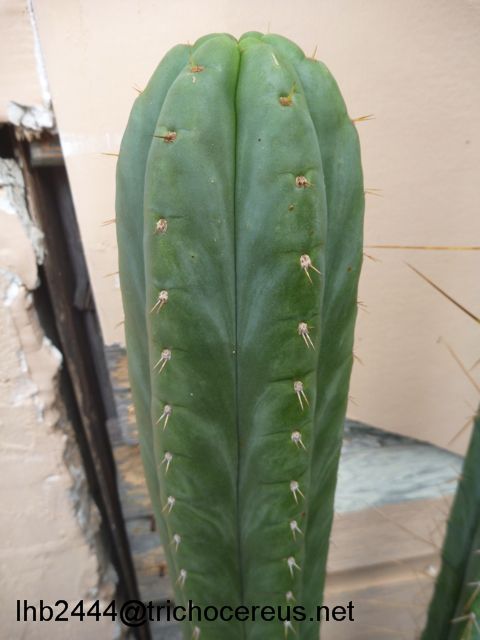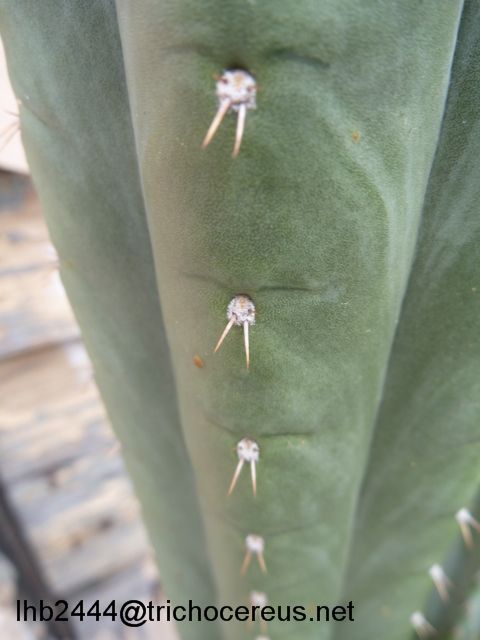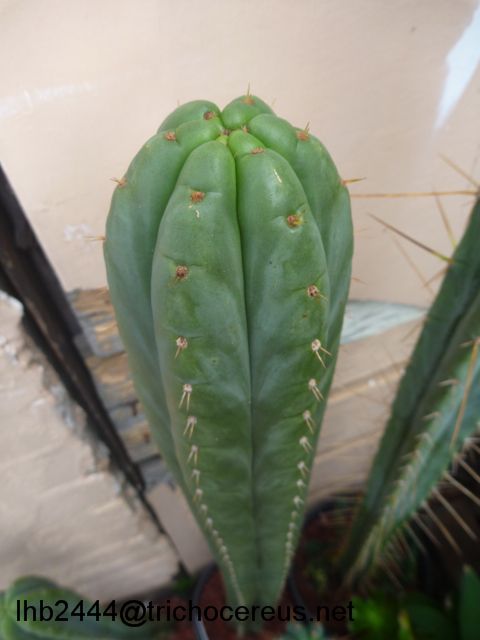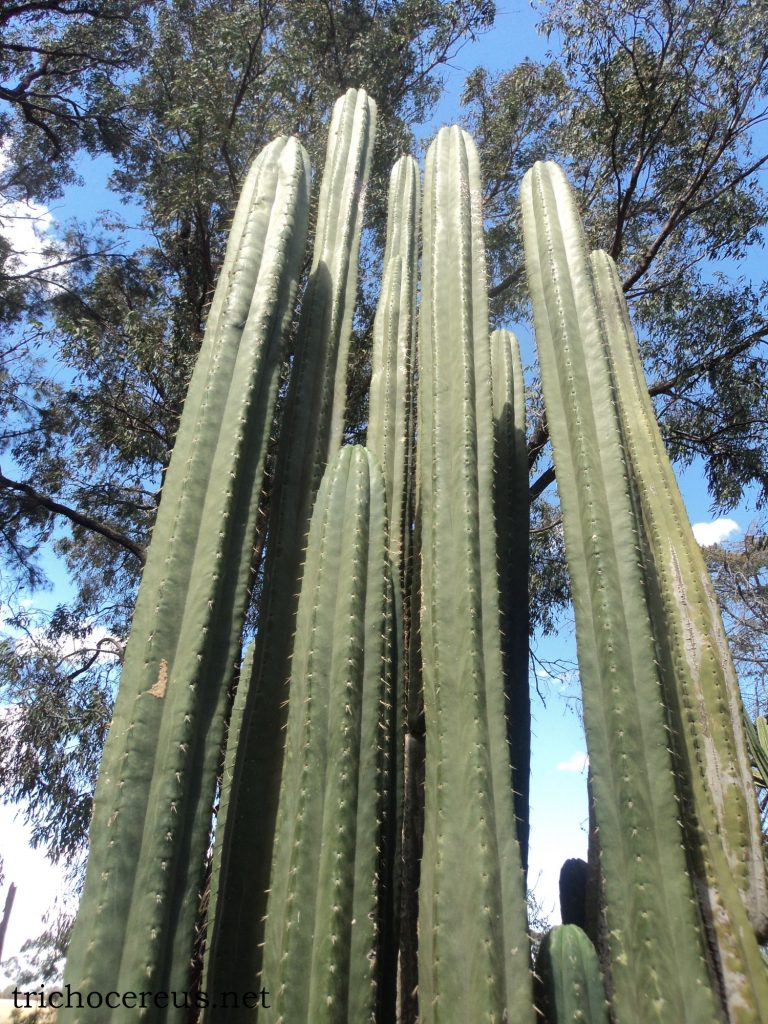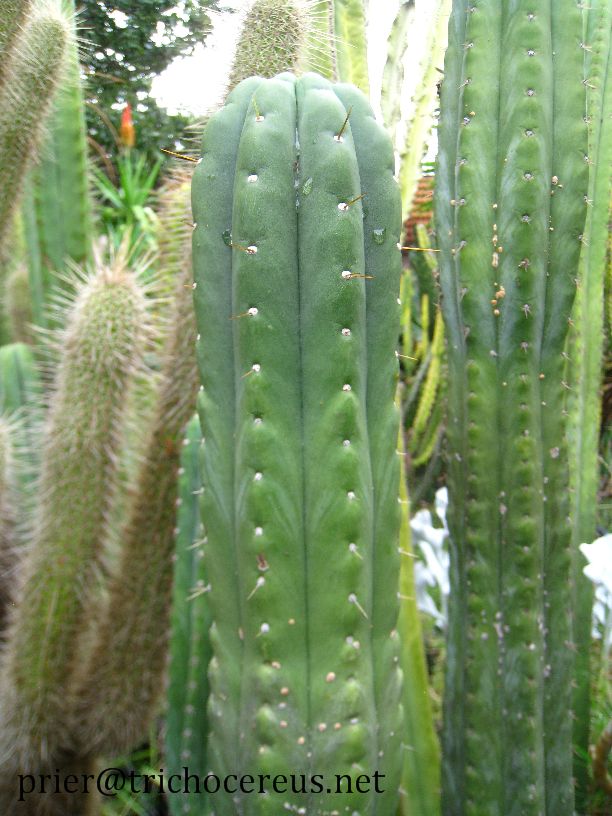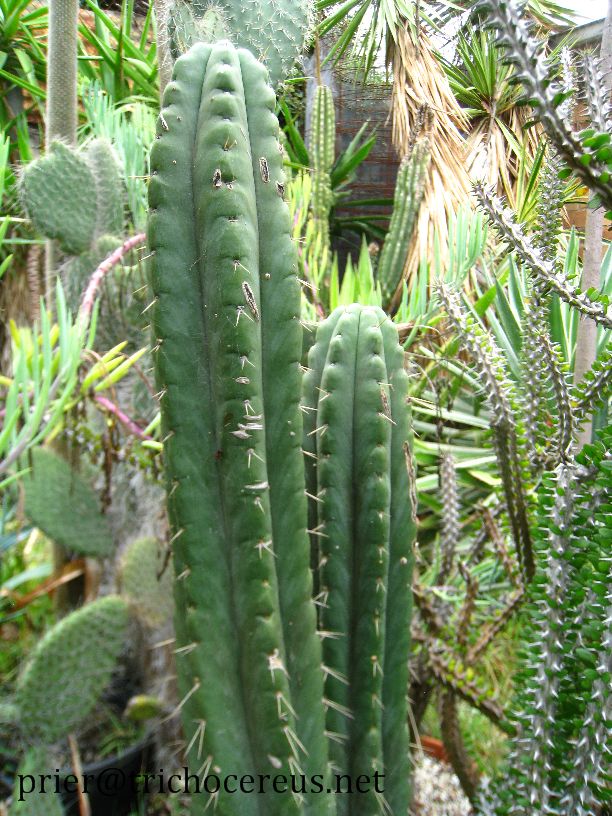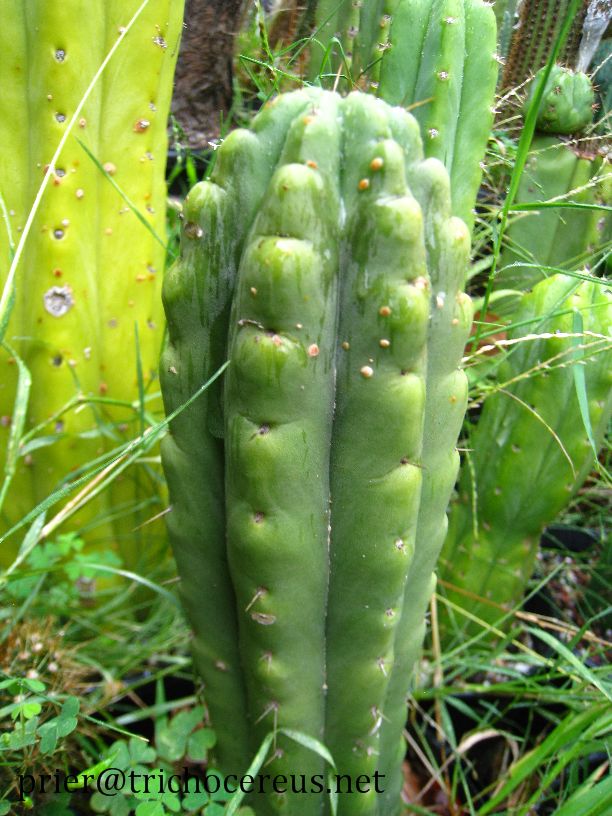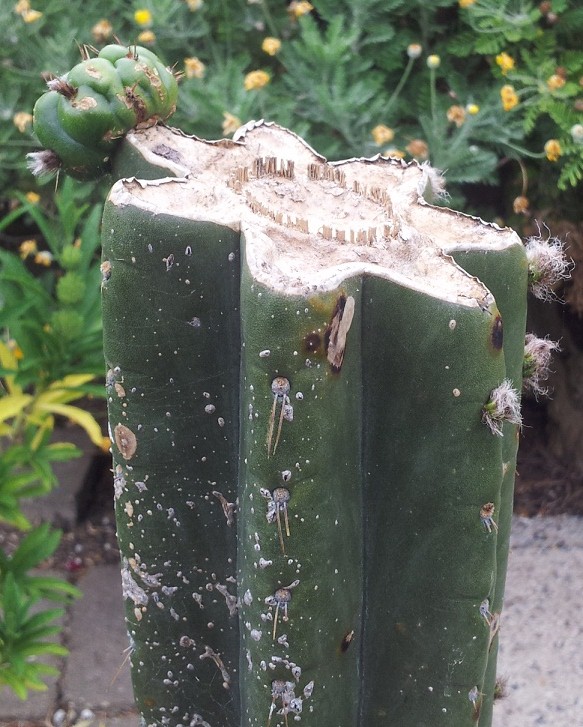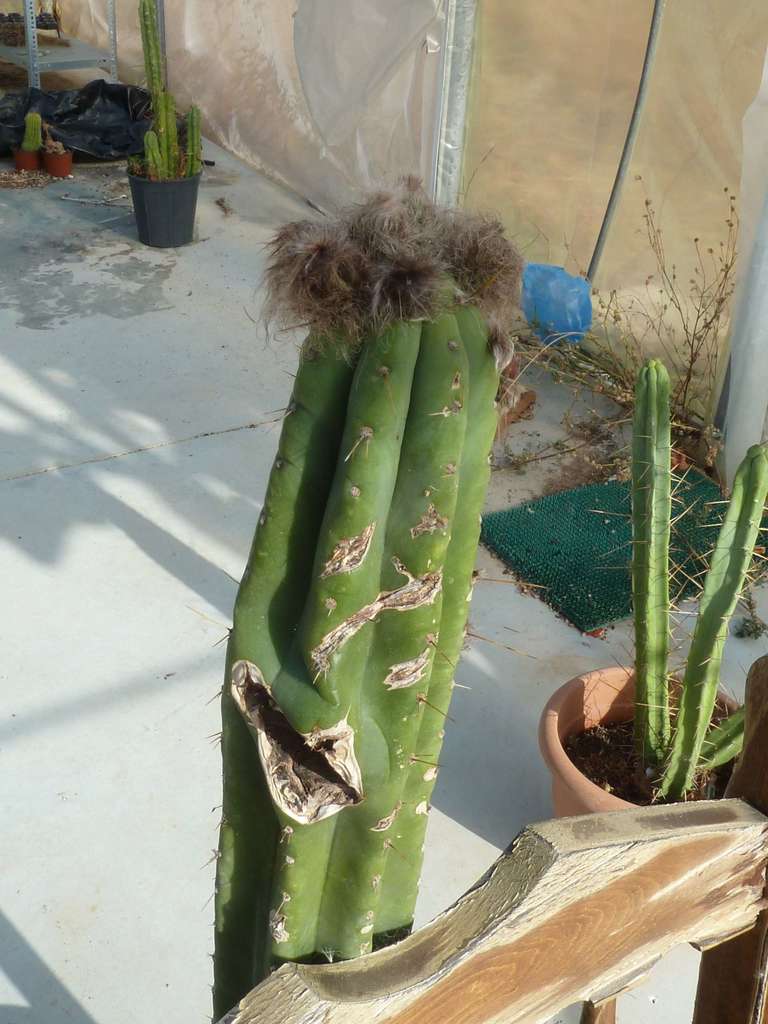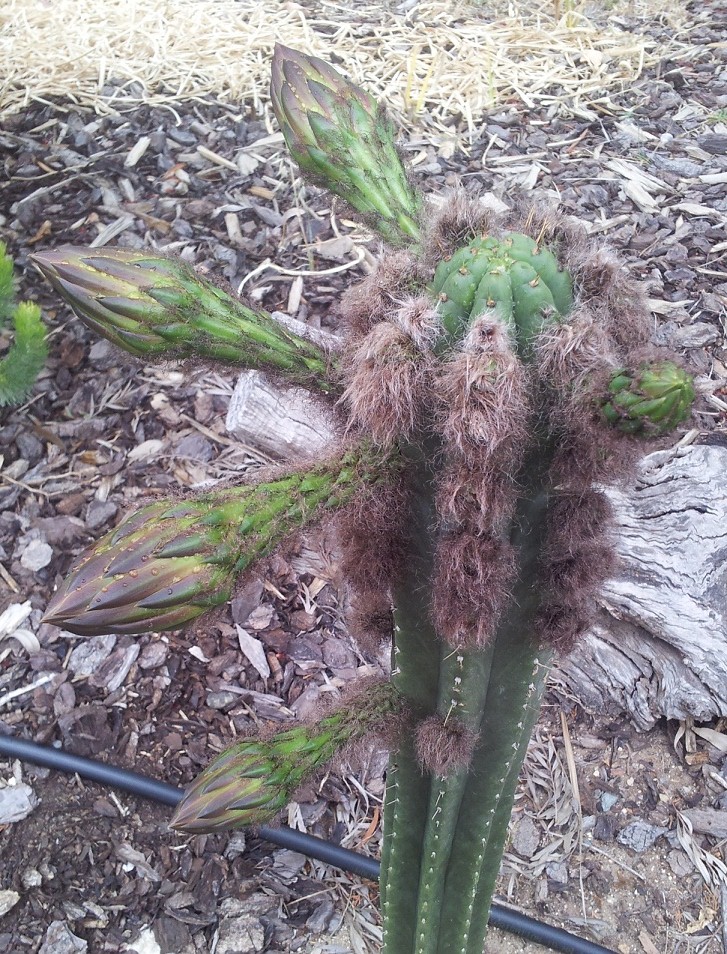Yowie is a very cool and popular Trichocereus Pachanoi with a unique Spination that consists of two parallel Spines per Areole. It also has very pronounced ribs and looks very much like an Ecuadorian Pachanoi. Now let me add some information about where this clone came from.
The Yowie clone originated in Yarrawonga Victoria. The SAB member Marsha (who was previously known by the username „Yowie“ led PD to the property where the mother plant of this clone grew. This clone is also part of the Fields collection, where many amazing clones came from. The clone is easily recognized by the pair of spines, that makes it very different from other Pachanois. However, similar plants can be found all across Australia (and the world), so it´s not really sure if Yowie is actually a clone or just represents a local type. I know similar (and almost identical) Pachanois, especially from Ecuador and it may be very well possible that they are not genetically identical to the Yowie clone. If you encounter similar plants, you can just test it by trying to breed it with a verified Yowie. If you are not sure about the ID of your plant, feel free to post in on SAB or our Trichocereus Facebook Group!
Where to buy Yowie seeds or plants?: This clone is really rare and only shows up every now and then on sales in the SAB forum or our Facebook group. I am currently not aware of any breeders that actively breed with it though there are some cuttings available every now and then. Those hybrids originated in Australia (which has very strict import and export laws), what makes them very rare throughout other parts of the world. For everyone who owns or is looking for some Yowies, I would recommend making a posting in the group or the SAB forum.
Pic: Prier
Pic: Gus Freeman
YOWIE Trichocereus Clone Echinopsis pachanoi Trichocereus clone Echinopsis pachanoi

